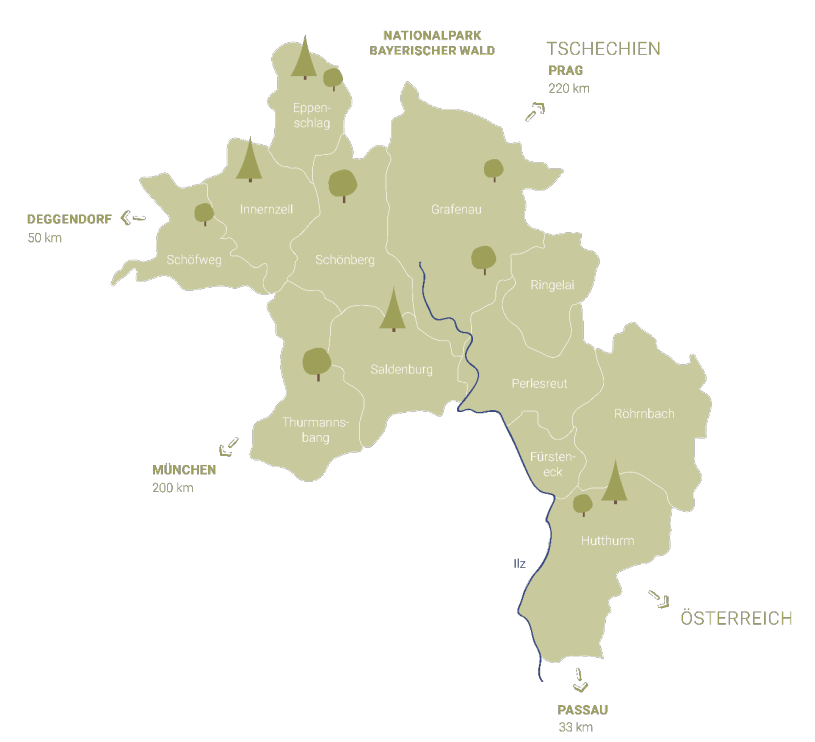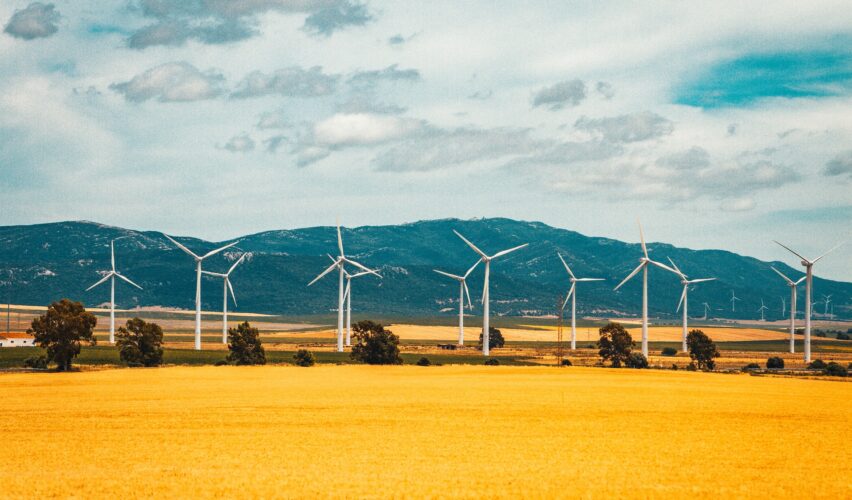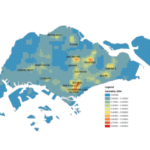The development of Smart European Cities needs to happen in parallel to a Smart Rural Europe agenda.
An estimated 70% of Europe’s land area is used for agriculture or covered by forestry. “The vital role of agricultural and rural development deeply affects the economic, social and environmental aspects of every EU member state.” Despite many rural communities facing depopulation and low prosperity, Ursula Von der Leyen, President of the European Commission, emphasized in a speech that “rural areas are the fabric of our society and heartbeat of our economy.”
In this article, the third in a series, we explore how rural and peripheral communities confront challenges and pursue new opportunities and how EU policies — although well-intended — may overlook the gaps between rural and urban prosperity.
Digital innovation and hybrid solutions to enhance rural areas
Digital innovation benefits Europe’s rural and peripheral areas by enhancing agricultural practices, reducing the digital divide and empowering communities to pursue new opportunities.
Rural Digital Futures is a flagship EU initiative designed to increase digital technology strengths and improve the quality of life in rural areas. In this initiative, policy makers are committed to widespread digital literacy, more connected rural communities, and equal access to emerging technologies,
In Germany, the Office for Rural Development of Lower Bavaria supports rural communities that work together in creating more future-oriented regions. The goal is to support “economic, ecological and social projects that a single municipality cannot implement by itself.” An example is Ilzer Land, a cooperative association of communities in a rural region in the Bavarian forest. The region’s communities are connected by a common cultural identity and a commitment “to promote the Ilzer Land as a business location while shaping the future of our homeland.”

Rural communities in Ilzer Land (Bavaria)
Citizens in Ilzer Land are clear about their cross-border aspirations: “We have to think and innovate together beyond municipal borders” to increase sustainability and “improve organic agriculture, the economy, tourism, and community participation.”
Towards a true SmartesLand
To develop Ilzer Land’s smart city strategy (known as SmartesLand), “we collected more than 400 ideas in our eleven participating municipalities on how to prepare our region for the future,” says Michele Bauer, head of marketing and communications at Smart City Ilzer Land e.V. “We bundled these ideas into eight measures with plans for implementation by 2026. The planned measures are thought of as hybrid. In other words, we will supplement analog ‘hands-on’ components with digital elements to achieve the greatest added value” while enabling social participation and strengthening social cohesion.
Ilzer Land’s strategic measures include the design of hybrid village centers, a digital participation platform, and hybrid communications (an Ilzer Land magazine, digital notice boards, and an Ilzer Land app).
The ideas for hybrid village centers emerged from multiple issues in the region. Bauer explained that “vacancies in village centers, a decline in social offerings in public spaces, a lack of redevelopment, and high commuter numbers, as well as little space for networking and knowledge transfer” led to the hybrid concept — where village centers are “intended as ‘spaces for all’ and serve as meeting points for modern village life.”
As a strategic measure, the hybrid concept “promotes revitalization of our village centers. In doing so, the eleven smart communities are committed to different focal points to complement each other” and to designing the new centers “as innovative spaces with diverse uses that create added value for young and old.” Another goal for the hybrid centers is to “create visualization and experimentation spaces” for future projects and measures involving cultural heritage and knowledge workshops.
As an early sign of Ilzer Land’s success, the first SmartesLand hybrid center is already open in the village of Ringelai.
Rural opportunities for renewable energy
In the European Green Deal, the EU decided to accelerate the rollout of renewable energy and raised its renewable target for 2030 to a minimum of 42.5%, “almost doubling the existing share of renewable energy in the EU.”
The European Network for Rural Development (now part of the EU CAP Network) believes rural communities in Europe — including mountainous and remote areas and islands — have opportunities to produce more renewable energy and contribute to regional economic development. Small rural businesses and farmers are launching renewable energy projects, energy storage systems, and heating and cooling networks.
Citizens In the region of Pays de Vilaine in France, for example, acquire ownership of renewable energy production and help local residents to reduce energy consumption. Three citizen-owned wind farms with 26 MW of operational power are currently operating. “These projects are respectful of the environment and its inhabitants, with a transparent and socially responsible governance.”
Research from the Lithuanian Center for Social Sciences, Institute of Economics and Rural Development indicates that “many rural communities [in Europe] are waiting for opportunities to expand local policy instruments, boost digitization and smart systems, and implement community energy projects.” Local governments are also eager “to innovate and increase the use of renewable energy sources (RES) and decentralize the energy supply.” Development of community energy systems depends on regulations that enable rural citizens to participate as shareholders and prosumers.
Europe’s new version of its Renewable Energy Directive (RED II) helps citizens and communities invest in renewables. RED II defines a ‘Renewable Energy Community’ (REC) as a legal entity through which citizens and local businesses can set up projects to produce renewable energy.
Agriculture and small farmers in an era of structural change
Farming communities are essential in terms of ensuring food security and sustainable agricultural practices, supporting local economies, protecting the natural landscape and preserving biodiversity. The European farming model is based on awareness of the diverse nature of Europe’s agricultural sector — and a belief in the sector as “a crucial provider of public goods.” The farming model is characterized by an emphasis on sustainability and considerable support in the form of subsidies and other incentives.
However, the agricultural sector is undergoing structural changes, and the farming model and policies must adapt accordingly. Across nearly all EU farming regions, a transformation is underway, characterized by an increase in average farm size and a concentration of production on fewer farms. The number of farms in Europe declined between 2003 and 2016 from 15 to 10 million. While factory farms are gaining in importance, small family-owned farms still account for an estimated 94% of Europe’s farms.
To appreciate the importance of smaller farms, consider Spain where more than 85% of food is produced on small and medium-sized family farms — according to UPA, a professional organization that represents the interests of 80,000 Spanish farmers and ranchers. The UPA says “sustainability is something inherent to the activity of small farmers.” However, Spanish farmers and ranchers are highly vulnerable to climate change, and small farms have fewer resources to confront climate threats.
After months of enduring a severe drought, Spain’s reservoirs fell in May to less than 50% of their capacity. To combat drought conditions, the Spanish government approved a 2 billion euro emergency fund, with about 33% allocated to new infrastructure for water shortages — including desalination plants and systems for reusing wastewater.
Smart Farming and Horizon Europe
In addition to water scarcity, small farmers face challenges in productivity, protection of soil and biodiversity, climate adaptation, resilience, and access to markets and technologies. Fortunately, policy makers and farmers recognize the importance of research and innovation to cope with these challenges.
At the European level, 9 billion euros are allocated to research from 2021 to 2027 — through the Horizon Europe program — in the agriculture and food sector, natural resources, and the bioeconomy. Improving the sustainability of European farming demands policies and initiatives which:
- Foster innovation in agriculture
- Support small-scale farming operations
- Increase the resilience of farms to external shocks
- Make the farming model more appealing to young farmers
Reflections on regional policies and rural innovation
Regional disparities in public services and prosperity persist in rural areas — disparities influenced by geographics, low population density, lack of employment opportunities, and infrastructure limitations. On the other hand, there is no shortage in the EU of well-intended policies, cross-border projects and funding programs to help rural areas meet current challenges and prepare for the future.
Europe’s cohesion policy aims at reducing regional disparities and promoting growth and social cohesion. It supports less developed regions through investments in infrastructure, innovation and social inclusion.
Based on an in-depth report on cohesion policy, a previously accepted view that Europe’s rural and peripheral areas are underdeveloped and lack innovative capacity has evolved to the point where these areas are valued for their intrinsic assets — and for opportunities to contribute to regional economic strengths. In many EU countries, rural regions are recognized as playing a central role in the economy and becoming the basic units of innovation ecosystems.
The European Commission recently launched a call for Regional Innovation Valleys (RIVs) “to strengthen Europe’s innovation ecosystems and address societal challenges, in particular those of digital and green transitions.”
Alas, the best laid plans and policies do not always yield the desired outcomes. A recent study in the Intereconomics journal on Europe’s green and digital transition concluded it “will likely widen the [prosperity] gap between rich and poor regions”. The study’s authors believe that EU policies “must overcome economic forces that favor a growing agglomeration of high-value economic activities in urban and industrial centres.” Agricultural regions “lag behind in growth potential and digital and green readiness.”
Generational renewal and a rural revival
Diana Lenzi, president of CEJA (European council of young farmers), agrees that Europe’s green and digital policies have limitations. “We often talk about how the green transition is a necessity, the digital transition is a necessity,” says Lenzi, but she claims Europe’s agricultural sector is facing a generational crisis and needs a new agricultural model — a more rewarding model, especially for young farmers.
Only about 11% of farmers in the EU are under the age of 40, and 32% are 65 years of age or more, according to Eurostat. Lenzi says that CEJA “represents the needs and aspirations of young farmers pushing for generational renewal in farming”.
Where do policy makers stand? During a meeting in 2022, members of the European Committee of Regions (CoR) and the European Parliament reached an agreement to work with local governments and citizens for a “rural revival”, and signed a joint declaration: Together for a smart rural Europe.
At this event, Franc Bogovič, co-chair of a European Parliament group on Rural, Mountainous and Remote Areas (RUMRA), said “the pandemic and the war brutally uncovered our vulnerability and our dependence. … Rural areas have the potential to be the most flexible and resilient regions of our continent, with a local population that is autonomous and has the ability to find sustainable solutions.”
This article is published under a Creative Commons license. Some rights reserved.












